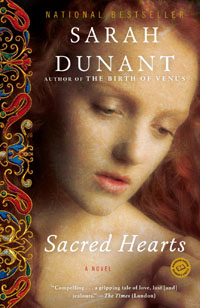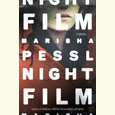Secrets in a Nun's Cell
In Sacred Hearts, Sarah Dunant captures the mystery—and the passion—in a Renaissance convent
A page-turner about a Benedictine order of Renaissance nuns (“magpies” as they were sometimes jokingly called for their severe black-and-white habits), may seem like a far-fetched concept, but Sacred Hearts, Sarah Dunant's latest novel, achieves the remarkable. Ecstasy, jealousy, betrayal, revenge, adolescent rebellion, and romance swirl like trails of incense behind the impenetrable walls of the Italian convent, Santa Caterina. Dunant, author of the bestselling The Birth of Venus, resurrects the daily observances dictating convent life, from sunrise Lauds to sunset Matins. The first startling line of Sacred Hearts marks the arrival of a novice—and proves that the acceptance of cloistered life is not equivalent to assuming a veil of boredom: "Before the screaming starts, the night silence of the convent is already alive with its own particular sounds.

In the nuns' cells, nightly rituals include prayers of the rosary, occasional acts of vanity (tweezing a stubborn chin hair), and self-mortification: "The candlelight reveals a leather belt nipped around her waist, a series of short nails on the inside, a few so deeply embedded in the flesh beneath that all that can be seen are the crusted swollen wounds where leather and skin have fused together. Slowly, deliberately she presses on one of the studs." Dunant approaches the phenomena of religious ecstasy and stigmata with a lyrical refinement that is both elegant and spare, reminiscent of the great Spanish mystic Saint Teresa of Avila.
The plot of Sacred Hearts derives from a tradition in which noble families would deposit disobedient or unmarriageable daughters (those with physical deformities or who were simply deemed insufficiently pretty) at convent doors, complete with dowries. In fact, many convents' survival depended upon their success at this macabre barter system, and a substantial dowry ensured a comfortable cell and less strenuous work duty for the novice bride of Christ. In Sacred Hearts, sixteen-year-old Serafina (Hebrew for the angels—the "burning ones"—that surround God's throne) is forced into the convent by her father and separated from the man she loves. Railing against her confinement with "incandescent anger," she is sedated, and later befriended, by Suora Zuana, the dispensary mistress whose books and knowledge of herbs and medicinal remedies provide the eventual means for Serafina's plot to flee the convent.

Dunant energizes her fluid and meditative story-telling with original, bare bones descriptions: a stubble of white hair "sits like frost on hard ground," and fingers "register a run of vertebrae distinct as standing stones in a graveyard." In several chapters, the exotic backdrop of the Italian town's Carnival, with its piazza bonfires and effusive sounds of love songs and masked revelers, clashes with the hushed austerity of convent Vespers, while the political and hierarchical machinations that play out inside and outside the convent walls, along with the nuns' own secret histories, provide Sacred Hearts with drama and substance.
More importantly, Sacred Hearts shines a light on the unique women who inhabited—indeed, established—convents during the Renaissance. They fostered a sense of freedom and community unconventional even for women of privilege. What may appear as a stultifying life was for many of these women not only a blessing but a godsend.
Sarah Dunant will read from Sacred Hearts at Davis-Kidd Booksellers in Nashville on April 20 at 7 p.m.


